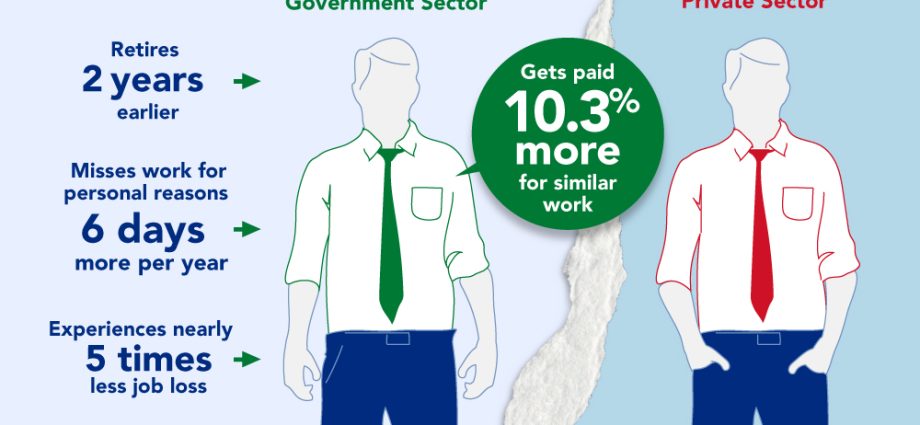TORONTO, Nov. 28, 2019 Government employees in Ontario received 10.3 per cent higher wages on average than comparable workers in the private sector last year, and enjoyed much more generous non-wage benefits, too, finds a new study by the Fraser Institute, an independent, non-partisan Canadian public policy think-tank.
“Bringing government-sector compensation in line with the private sector would not only help governments in Ontario control spending without reducing services, it would also maintain fairness for taxpayers,” said Ben Eisen, a Fraser Institute Senior Fellow with the Ontario Prosperity Initiative.
The study, Comparing Government and Private Sector Compensation in Ontario, finds that government employees in Ontario—including federal, provincial and municipal workers—received 10.3 per cent higher wages, on average, than comparable workers in the private sector in 2018. And that wage gap accounts for differences between workers in the two sectors such as age, gender, education, tenure and type of work.
But wages are only part of overall compensation. Government workers in Ontario enjoy much more generous benefits, too.
- Pensions: Nearly 8-in-10 government workers in Ontario (78.4 per cent) have a defined benefit pension plan—which offers a guaranteed level of benefits in retirement—compared to less than 1-in-10 workers in the private sector (9.8 per cent).
- Early retirement: Government workers in Ontario retire two years earlier, on average, than private-sector workers.
- Personal leave: Government workers in Ontario are absent from their jobs for personal reasons 75.6 per cent more often than private-sector workers—13.7 days compared to 7.8 days.
- Job security: Government workers were nearly five times less likely to experience job loss than private-sector workers—0.5 per cent compared to 2.3 per cent.
“Of course, governments in Ontario should provide competitive compensation to attract qualified employees, but clearly wages and benefits in the government sector are out of step with the private sector,” Eisen said.
Main Conclusions
- Using data on individual workers from January to December 2018, this report estimates the wage differential between the government and private sectors in Ontario. It also evaluates four non-wage benefits for which data are available to quantify compensation differences between the two sectors.
- After controlling for factors like gender, age, marital status, education, tenure, size of firm, job permanence, immigrant status, industry, occupation, and full- or part-time status, the authors found that Ontario’s government-sector workers (federal, provincial, and local) enjoyed a 10.3% wage premium, on average, over their private-sector counterparts in 2018. When unionization status is factored into the analysis, the wage premium for the government sector declines to 7.3%.
- The available data on non-wage benefits suggest that the government sector enjoys an advantage over the private sector. For example, 82.7% of government workers in Ontario are covered by a registered pension plan, compared to 24.6% of private-sector workers. Of those covered by a registered pension plan, 94.8% of government workers enjoyed a defined benefit pension compared to 39.8% of private-sector workers.
- In addition, government workers retire earlier than their private-sector counterparts— about 2.0 years on average—and are much less likely to lose their jobs (2.3% in the private sector compared to 0.5% in the public sector).
- Moreover, full-time workers in the government sector lost more work time in 2018 for personal reasons (13.7 days on average) than their private-sector counterparts (7.8 days).
